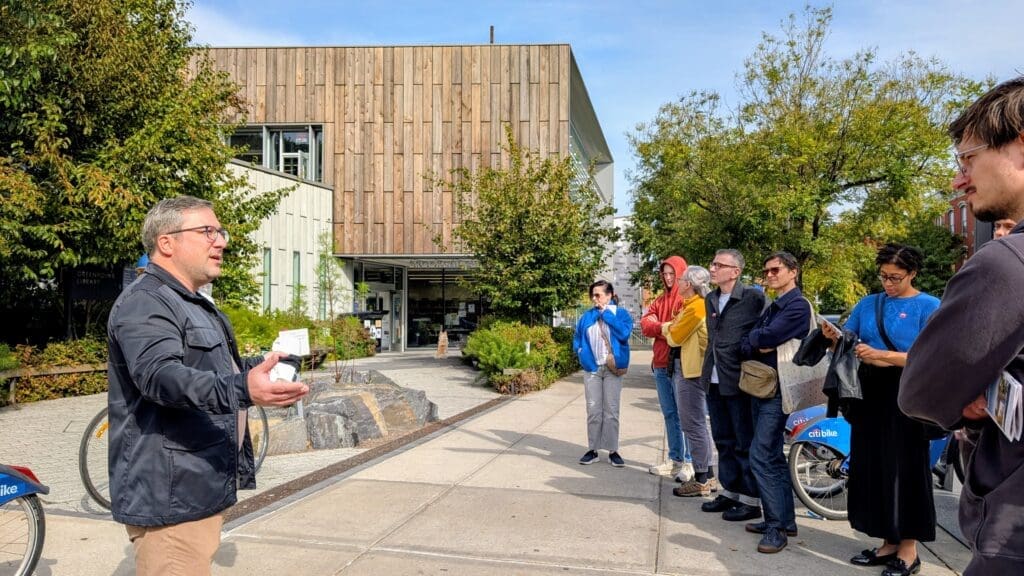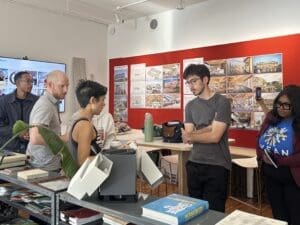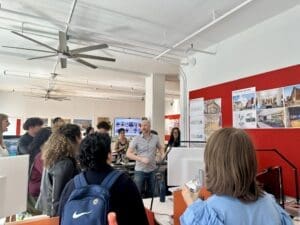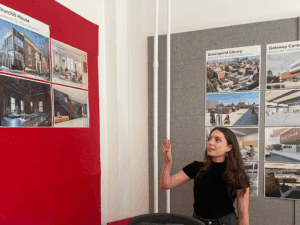We’re thrilled to share that the Greenpoint Library and Environmental Education Center has been featured as a case study in the NYC Department of City Planning’s Principles of Good Urban Design. Highlighted as an exemplary civic building, the project is recognized for demonstrating how thoughtful architecture and landscape design can strengthen community life, reflect neighborhood identity, and advance the City’s sustainability goals.
The case study showcases the library’s welcoming public spaces, its integration of indoor and outdoor environments across three levels, and its close collaboration with local environmental organizations. It also highlights the project’s innovative strategies—including energy-efficient systems, stormwater capture, and biodiverse outdoor programming areas—that contributed to its LEED Gold certification.
Completed in 2020, the library continues its long legacy as a community anchor in Greenpoint and a leading example of high-quality civic design in New York City.
View the case study here.
Images courtesy of @nycplanning on Instagram.



